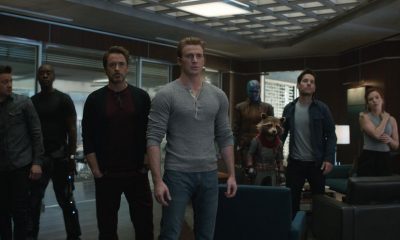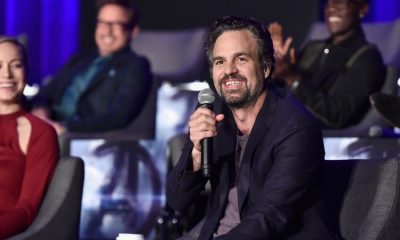Features
A Super-Spoilery Infinity War Post, Complete with Random Thoughts
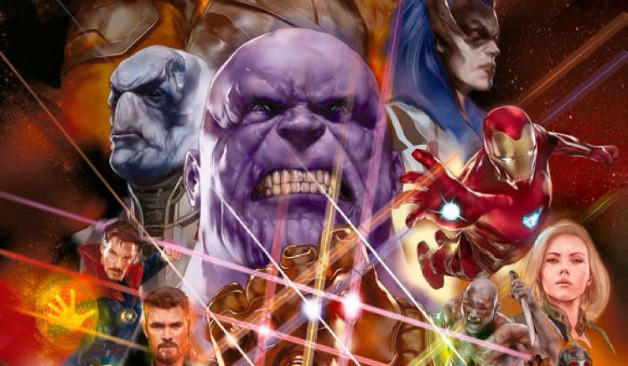
I saw the incredible new Marvel movie, Avengers: Infinity War on Thursday night, and like the rest of you, I’m still recovering.
Be aware, there be spoilers ahead. Like seriously, big-time spoilers ahead. Don’t read on if you don’t want spoiled!
• I kinda saw Loki getting killed from the beginning. He was warned in the original Avengers. Although, he did die like twice already. He also identified himself as an Odinson, which is a huge leap! He died a hero. I’m also wondering what happened to Korg and Valkyrie.
• Hulk got his green butt kicked properly! So much so he never came out during the entire rest of the movie! Yes, he was Mark Ruffalo the entire time!
• I like the concept of the Black Order, but they weren’t as powerful as they were in the comics. Getting rid of them was par for the course before facing off with Thanos.
• Tony’s Bleeding Edge armor was awesome! Shields, Wakandan pulse blasters, swords, everything! It didn’t feel as “organic” (for lack of a better word) than his previous armors. Pepper Potts makes a Marvel comeback. Also, when is Ben & Jerry’s going to release Stark Raving Hazelnuts?
• Love Captain America’s new look. Beard, killer costume, a bit battle-worn. Still no original shield. Never really identified as Nomad, didn’t see that attitude either. Falcon’s costume was looking a little beat-up too, which is great. I want to see a movie with them and Black Widow going on missions.
• Speaking of Black Widow, she’s rocking a new blonde look and a little more utilitarian tactical uniform. She does get to kick major ass and do some wisecracking. Too much going on to get some alone time with Banner.
• Rhodey not loving the Sokovia Accords anymore! And if Secretary Ross survives the Infinity Rapture (copyright me), he gets to look forward to a court martial!
• Scarlet Witch and Vision are in love. They’ve been sneaking time together for the past two years, this time in Scotland. Their love story ties the whole movie together; you feel for them during the final scenes.
• Bucky Barnes, AKA The White Wolf. Break in case of war. His interaction with Rocket on the battle field was great. Their combat combo is worthy of a comic book. The fans’ expectations were met: Rocket does covet Bucky’s new Vibranium arm.
• Loved they introduced the Guardians with a funky old ‘70’s tune, courtesy of Yondu’s Zune. An introduction to Awesome Mix Volume 3? And I may have already downloaded it to my IPod. Also, Quill and Gamora have consummated (no pun intended) their Sam-and-Diane-Cheers-Unspoken-Thing. His 1980’s references made my day. Oh, and Teen Groot just playing a video game THE ENTIRE MOVIE. Except for periods of fighting and sacrificing arms. Y’know, a typical teenager. His interaction with Steve Rogers is worth the price of admission.
• Peter Parker, apparently off a lifetime grounding since he has his Stark Spidey Costume. And then, of course, there are THE DOC OCK ARMS. Right out of the Civil War comic. Tony also called him “Pete” a few times, which was just neat.
• Dude, Thor is 1500 years old and took Groot as an Elective Language course. He now has two eyes again, courtesy of Rocket’s Pulp-Fiction-eye-smuggling…
• “I’ll do YOU one better: WHY is Gamora?” Oh, Drax.
• One of Peter’s movie references is ALIENS, which happens to be one of my favorite movies! And Ebony Maw floating out in space kinda reminded me of the Emperor from Robot Chicken. Oh, and him telling Quill that Footloose did not stand the test of time. His whole Guardians crew know of the legend of Kevin Bacon.
• No Hawkeye. No Ant-Man. NO COULSON!
• Yes, but there is a massive/yet still a little person Peter Dinklage (hey, he was in both big Marvel franchises—X-men and Avengers)! Great concept! Although it was spoiled before the movie came out, I’m really digging the new axe Stormbreaker! Bifrost bridges, lightning, the whole works. Can only Thor pick it up?
• RED SKULL!!!!!! Bravo, Marvel! I never saw that coming! I didn’t know it wasn’t Hugo Weaving until the credits! Guess 70+ years of contemplation and being told he was too weak to have an Infinity Stone really mellows a guy out!
• You’ve heard of the THANOS theory, the one that states T is Tesseract, A is for Aether, N is for Necklace, O is for Orb, and S is for Scepter? So what does H stand for in this case? Hood (Red Skull’s funky cloak), Heart (for Thanos’ getting broken) or Hand (where the stone appeared after killing Gamora)? Or, as I’ve noticed on Facebook, it stands for HYDRA?
• Oh, yeah—the death of Gamora! WHAT? Shows Thanos has feelings for other people, despite being a genocidal maniac. I never gained any sympathy for the guy, however.
• THE BATTLE OF WAKANDA!!!!!! One of the most incredible battles Marvel has ever put on film! Hulkbuster, carpet bombs, and freakin’ THOR bringing the thunder! “Oh, you guys are so screwed now!”
• My theory is that Dr. Strange saw all those futures and the only one where humanity survives is because of Tony Stark. Hence all the sacrificing.
• That ending. Did you notice the original Avengers survived: Cap, Thor, Banner, Widow, and Hawkeye (I would assume). The good guys won the battle of Wakanda, lost to Thanos on Titan, and of course, humanity lost half its population.
• Speaking of deaths, I think Spidey was able to articulate his death because of his Spider-Sense, which made it that much more horrible. Did Shuri survive? Is she the new Queen of Wakanda?
• I did try to figure out how Nebula and Tony get back to Earth, being the only ones left after the battle with Thanos. Then it occurred to me that The Milano is somewhere on the planet and Nebula would know how to pilot it back to Earth.
• I’m really digging Nick Fury’s 90’s/futuristic Captain Marvel pager. It looks like it’s been souped-up using alien and retro-human technology. It means he’s been carrying that thing around with him since the 1990’s. What, Chitauri and Dark Elves alien invasions aren’t worth the SOS? Also, kudos on the almost-swearing!
• I gotta see that again.
Features
Punisher Season Two Carefully Balances Frank’s Humanity, but Struggles With Dual Conflicts
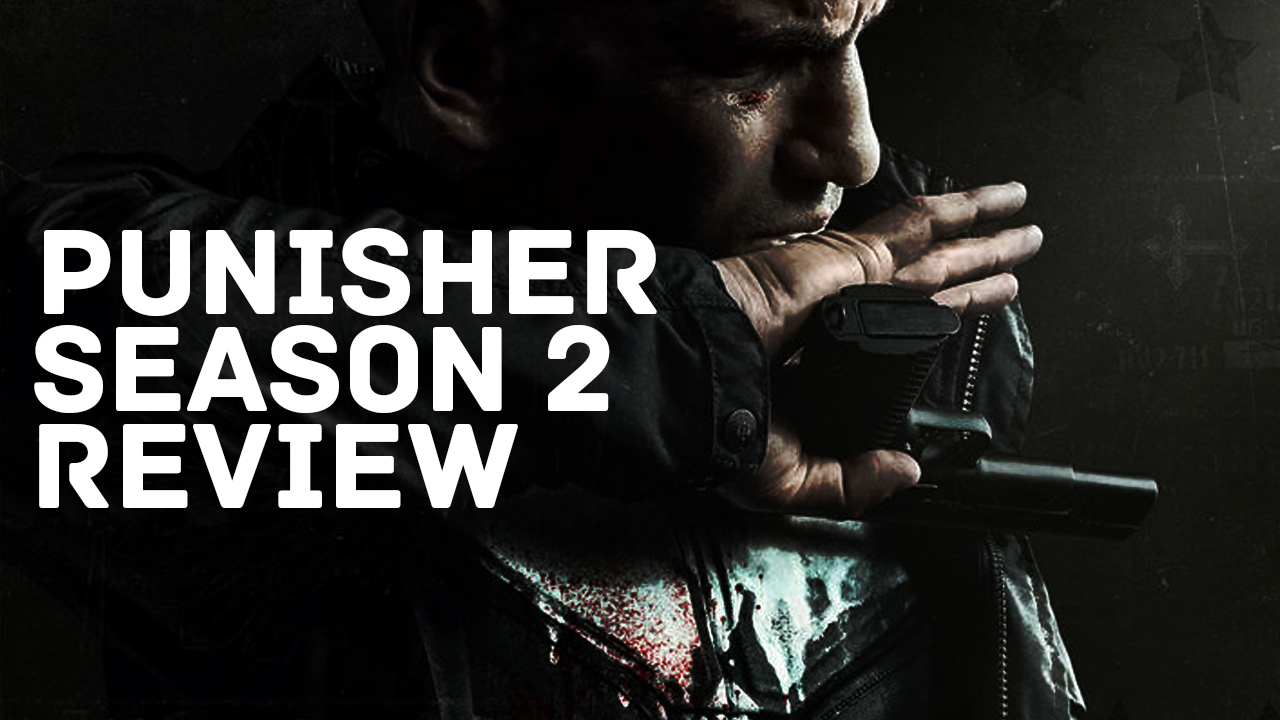
On January 18, The Punisher will be back on Netflix, with Jon Bernthal returning to keep the character alive on a platform where Marvel shows have been producing great quality, but still haven’t been able to survive. Fans were first introduced the the character in Daredevil season two, where fans learned the backstory of Frank Castle, a veteran and father, who’s family was killed in front of him after returning from war. When Castle returned to Netflix for his stand-alone series, we got a slightly altered background story, focusing on his war buddy, Billy Russo, played by Ben Barnes, as a force behind the killing of Frank’s family that day by the carousel.
Season two of The Punisher has some strong moments, particularly in the beginning. While season one hinted that Castle’s fighting days may be over, as he took the identity of Pete Castiglione and sat in on some group therapy, season two shows that Pete is just as much of a fighter as Frank.
The first three episodes are the best of the season. These could stand-alone as a new series about Pete living in the Midwest trying to carry on with a normal life, but his protective instinct pulls him into trouble. Unfortunately, the show moves Frank to more familiar territory, and after that move the show struggles to find balance. The storyline focused around a gang of religious extremists intent to kill Frank and the young woman he’s protecting never finds familiar territory with the second story, where Billy Russo re-emerges as a threat to New York.
The young woman Frank is protecting is Amy Bendix, a new character brought to life by Giorgia Whigham. Amy joins the other strong women of the series (such as Dinah Madani and Karen Page in Season one) on a path to prove that beneath all of the violence, the Punisher himself is a decent human being.
And that conflict, the humanity of Frank and his ability to kill people without hesitation is a topic of discussion throughout the whole season. Characters confront their own anger, haunted by demons of their past, and try to decide if they can be the type of killer that Castle can be, without becoming the person that he is. At times, it is a bit too much of people staring at their own navels, talking to therapists, and drinking away their emotions. However, ever since The Punisher branched off on his own, the show has crammed it down the audience’s throat that the people on the show are real, and not to be looked at as killers with no chance at redemption. At times this is the show’s biggest flaw – it’s trying too hard to prove that Frank is, and is surrounded by, good people.
Could Billy Russo be one of those good people? As Billy recovers from his injuries incurred at Frank’s hands, his possibility for redemption becomes a major topic. Russo loses a part of himself when he recovers, but it isn’t his humanity. If anything, the character comes back as a more tender, loving person. His arc may have felt more fresh if we had more time between the story of a mentally unstable villain seeking his north star in Daredevil before watching Billy on his own journey of mental healing. However, the therapist that helps Billy find himself again serves as yet another woman around the men of the series that helps remind the audience, and the characters, of their humanity.
I struggle to find much to say about the new villains of the season, a group of religious extremists that want Amy and Frank dead. While the show presents these characters as mysterious villains, it was hard to find a reason to care about their stories, motives, and goals. Something never really clicked to make them more than a way to add material and complexity to a show that could have been exciting enough with the stories available in New York. But they give us Amy, who is a delight, even if her storyline falters.
One high spot in the series is an amazing soundtrack of heart-felt blues renditions of classic songs, woven into emotional moments along the way. Just as Luke Cage takes you to Harlem with it’s sound track, the tunes chosen for emotional moments in The Punisher feel like American simplicity. With acoustic guitars accompanying shoot-outs, it’s as American as the single-wide trailer where Frank and Amy live for much of the season.
If you are still holding out hope for cross-overs between the Netflix shows, you should realize by now that we likely aren’t going to see any title characters showing up without a little bit of hype before-hand. However, Frank does continue to live in a world where New York City only has one cop of note outside of Harlem, and that is the beloved Brett Mahoney, portrayed by Royce Johnson. Johnson comes close to stealing the show in this upcoming season, appearing frequently, with a personality created by being the one person in law enforcement that still cares to follow the rules.
On January 18, you may not want to cancel all plans to watch the series as fast as you can, but the beginning of the season is strong enough to pull you back in, even if you don’t remember many details from Season one. And if we never see more of Frank Castle and his own side of the Netflix MCU after this season, things are wrapped up nicely enough that we won’t be as angry as those that watched all of Iron Fist.
Features
Runaways Season 2 Feels Like A Step Back

Runaways Season 2 is an unusual show to review, in that it is not often a sophomore effort is the first to truly live out the premise of the show. With the so called Runaways staying at home for most of Season 1, the first go round with the teens served as a sort of extended pilot more than anything. The obvious confidence Hulu had in the property, with its almost assured second season, allowed Brian K Vaughn and team to do things in that first season that deepened the foundation of the characters and ultimately should pay off. None the less, Season 2 is the first time we’ve truly seen the teens on the run.
Early on, this new reality helps the show come to life. The obvious hazards of being on the streets, struggling for money and food, and trying to adjust to falling from the 1% to homelessness make for engaging drama in the beginning of the season. This setup gives the show an edge and sense of danger that was too often missing in the first season, filmed mostly in mansions. Sadly the premise is stripped away far too quickly as the characters move into digs that are comic accurate but which also blunt the point end of being a runaway in the first place.
My general concern with this season, and the show in general, is that far too often it feels uncomfortable in its own skin. Some of the time it is a teen melodrama that is almost embarrassed of its super hero trappings. At other times its a super hero show that has long lulls where puberty seems the real villain, not the alien antagonist. Some fans will undoubtedly feel like the mix is just right, giving them just the right dose of each. And the source material, the modern classic comic series, is a bit like that as well. For me it just felt like both halves seem rushed in order to make sure that the other half isn’t underserved. As such the adolescent soap opera doesn’t have space to breath and the comic fight scenes feel far too short.
The challenge of a large cast is obvious in this show. Characters disappear for a few episodes at a time. That’s the nature of this beast. Generally, the show is at its most alive when the characters are all in one room, at least the six protagonists. The wit is fast paced and typically well timed by the actors. It can have an Alan Sorkin kind of electricity in the dialogue. But too often the characters are sent off on character development homework side missions, which don’t have the same energy. Chemistry is what makes and breaks this show and it is often a roller coaster entity in season 2. Some scenes are spectacular and others just lack punch.
The powers and special effects on the show also tend to get under served in production. For a group of kids constantly running head long into trouble, they seem to always leave their dinosaur at home. Maybe just once it would make sense to bring along his muscle, if only the show wasn’t hiding him away lest they over play their puppeteering skill or blow out the budget. One consistently wonders if the brief VFX scenes are due to the desires of the show runner, or a property that maybe is misplaced in TV financing world. Its not that anything looks bad, its just all very short. A mid-season climax point that is clearly meant to be a special effect bonanza ultimately feels like 25 actors looking at each other menacingly without enough things actually happening. In particular, the Runaways as a team don’t manage the kind of combinations and power complementation that makes a team up like the Avengers, Guardians of the Galaxy, or even Quake and Ghost Rider on Agents of SHIELD, so satisfactory.
A mention should quickly be made of the characters and their arcs. Nico is coming to grips both with her new relationship and the fact that she has replaced Alex as the de facto leader of the group. This weight is in fact heavy for her. Molly continues to grow out of adulthood and into a role with more agency. This leads to the kinds of mistakes all people make when maturing. Alex is sort of the outsider after falling out with Nico, so viewers get to see him connect with unlikely people in a new community. Chase is stripped of all the things that made him a hot shot. He’s struggling with a more domestic role and how to show sensitivity. Gert has some personal health issues that throw her off stride. And Karolina is trying to figure out who she really is. This leads her to seek answers in a really questionable place. The performances all have highs and lows, with Allegra Acosta’s Molly maybe being the most consistent character.
Generally the acting in this show gets a little cringe worthy at some times. The material leans so heavily into the world of melodrama its is kind of hard to take some lines and takes seriously. Did they really just say that? Somewhat paradoxically, the show really clicks on two ends of the spectrum. First of all, the relationships and the experiences of hurt ring true. When these characters are people first and superhero second, they tend to be believable. Secondly, some of the world building, particularly some later season flash back work, is interesting and engaging in part because it’s completely over the top. Its just the in between stuff that can be messy.
As a huge fan of Season 1, this second season does feel like a step back. One can see what the show runners are aiming for, but they just miss the execution. The pacing and storytelling are too muddled and ultimately it feels like that hurts the performances. Too many hand break turns are happening for any groove to occur in the show. Actors are trying to do legitimate human emotion on minute and then ten minutes later they’re in the midst of a monologue about cosmic pseudeoscience or engaged in hokey slow mo fights. A lot of good stuff is in this season, and the fans will probably still enjoy it, but the show needs to make more hard decisions about what it really is and what it really wants to be.
Features
How Daredevil Season 3 Depicts the Fight Against Real and Present Fears
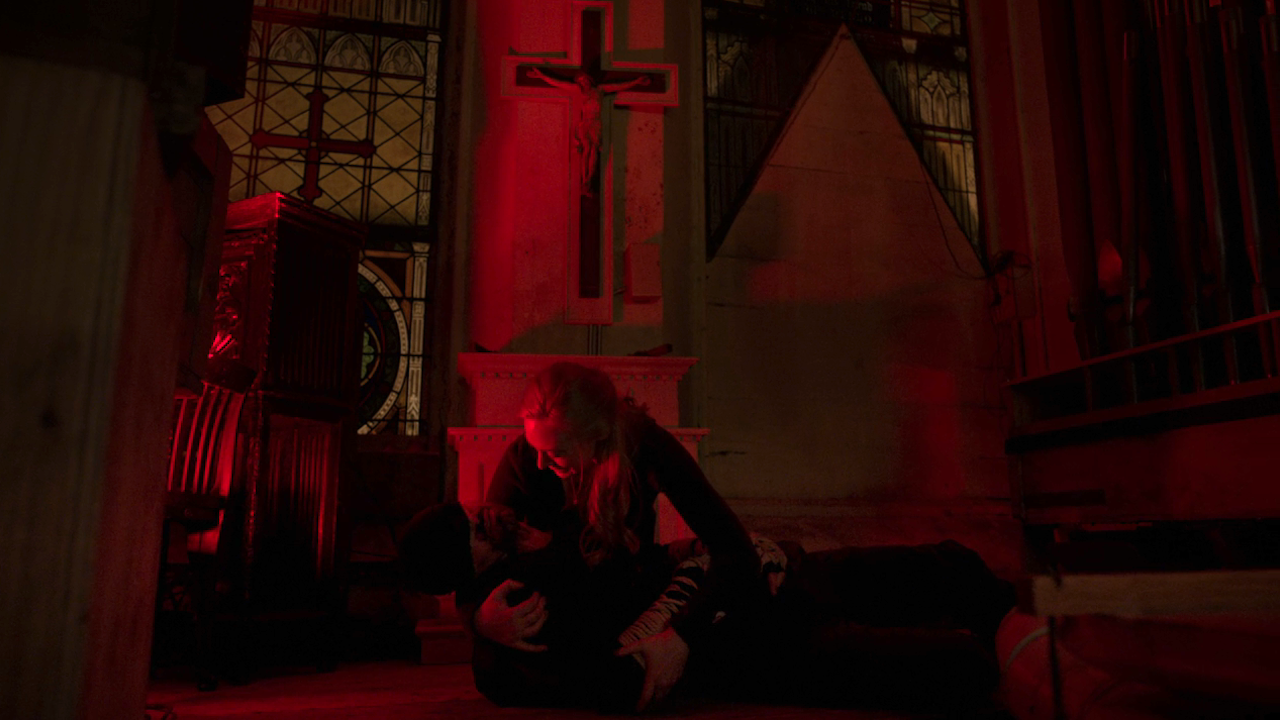
(Content Warning: mass shooting tragedies in the United States; Spoiler Warning for Daredevil season 3)
Those living in the United States have gotten too accustomed to bad news. Every mass shooting, wildfire, and other various tragedies have become distilled to push notifications on phones and headlines on cable news. I’ve felt a certain guilt for an increasing indifference as the bad news has increased in volume, but I felt this even more so when the news finally reached me personally. The Tree of Life shooting in Pittsburgh set something off in me, as I went to school mere miles away from there, and I visited Squirrel Hill for leisure and errands regularly. I felt sorrowful and uneasy knowing that such a nefarious act was committed in an area I once considered to be practically my backyard.
It had an eerie and troubling effect on a piece of media that I treasured, as only a couple of weeks before this real-life tragedy, Netflix released season 3 of Daredevil, which prominently featured a chilling scene of a fatal attack on a place of worship.
What that television show did might not necessarily be bad taste, as it released before the real-life analogous event occurred—it isn’t the same situation where the Las Vegas shooting prevented the apparently-planned early release of The Punisher, or Paramount executives scurrying and attempting to release their Heathers television reboot in piecemeal, attempting to slip their tone-deaf program in-between real-life tragedies. Still, the proximity in date alone puts a shroud over Daredevil in my eyes, and a rewatch is impossible for me without associating it with the act of hate and domestic terrorism that happened in a city I love.
I eventually thought back to the words of Erik Oleson, the showrunner of Daredevil’s third season. I attended the Daredevil New York Comic-Con panel, where Oleson presented his thesis statement for season 3—it would be about “combating fear and the narcissistic tyrants that weaponize it.” The Tree of Life shooting is not the only recent news event that could be analogous to events in his show, and none of these were unfortunate coincidences—these were by the show’s design. Daredevil season 3 tapped into our real-life fears and anxieties, and like practically all superhero fiction, it presented a fantastical story where those fears were conquered.
To anyone at that NYCC panel with their finger on the pulse, it was obvious just what (or who) Oleson was referring to. Wilson Fisk, finally embracing the role and appearance of the Kingpin, is our narcissistic tyrant.
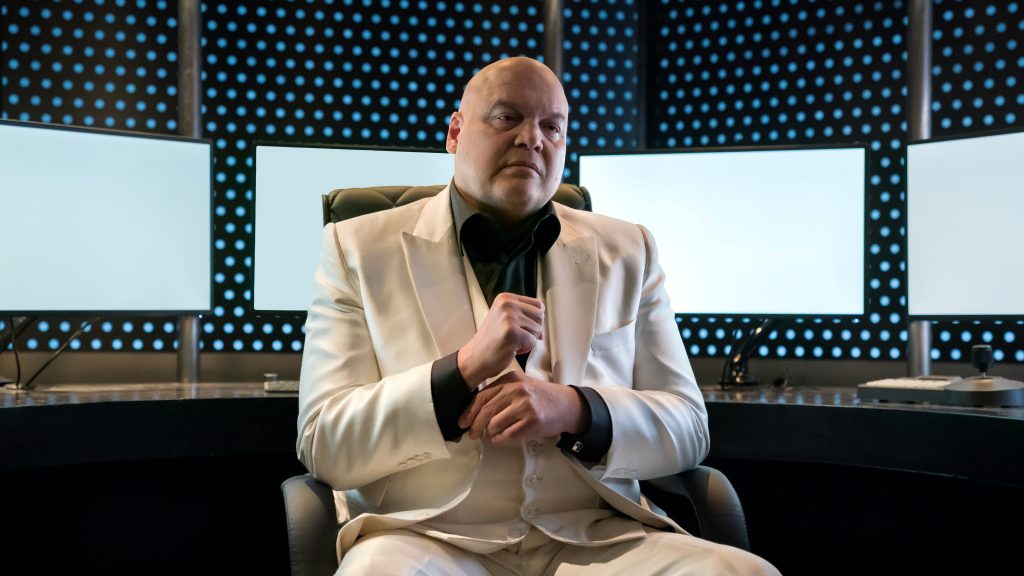
Marvel’s Daredevil
At its bare bones, Fisk’s plan to cultivate a culture of fear isn’t far from how real-life tyrants do so. Despite the general public knowledge of his misdeeds, even garnering chants of “Lock him up!” outside of his lavish New York penthouse, Kingpin is able to obtain the trust of the common citizens. Fisk’s apparent ace in the hole is a fake Daredevil, with a skilled FBI agent that Fisk himself corrupted donning the red horned costume. With this terrorizing Daredevil imposter, Fisk creates a new public enemy for all to fear, projecting an image of power and safety that only he could provide.
And the imposter in question, Agent Pointdexter, is a troubled man with psychopathic tendencies and a desire to learn about empathy. Found in a vulnerable position, Dex is manipulated and deceived to enact Fisk’s plan of wide-scale gaslighting. And as we find out later in the season, Fisk’s corruption and manipulation of institutions such as the FBI has reached an absurd point. No character in Daredevil season 3 can better personify this than Agent Ray Nadeem.
In a period of time where many in the public are less trustful of law enforcement officials and the institutions that enable and protect them, it may be harder to swallow more idealistic portrayals of them through fictional portrayals. Not everyone is Special Agent Dale Cooper from Twin Peaks or the lovable bunch in Brooklyn Nine-Nine. But there was something captivating about Nadeem’s own troubles and anxiety that brought him down to a more grounded level. His anxiety was economically-based, as a result of covering his sister-in-law’s health care coverage. Seeing a struggling, suburban Indian-American family just barely making it was instantly more tangible than the more lavish, romanticized views of such law enforcement officials on television.
I don’t believe that anyone in this season of television had it harder than Nadeem. He is torn between his duty to provide for his family, his own moral, ethical code, his loyalty to his agency, his friendship with Dex, his desperation to fight through the bureaucracy denying him a larger paycheck, and so many other forces that are in play. By the end of his plight, Nadeem leaves a mixed legacy. While he was complicit in many of Fisk’s crimes, he was also key to bringing the entire operation down. In a season where FBI agents are shown to be corrupt in a cartoonish fashion through a boardroom scene, Nadeem being the only one with an apparent conscience gives slight “not all cops” vibes, while at the same time being truly reflective of the hidden fears and anxieties even within the upper-middle class that can be exploited by bad actors.
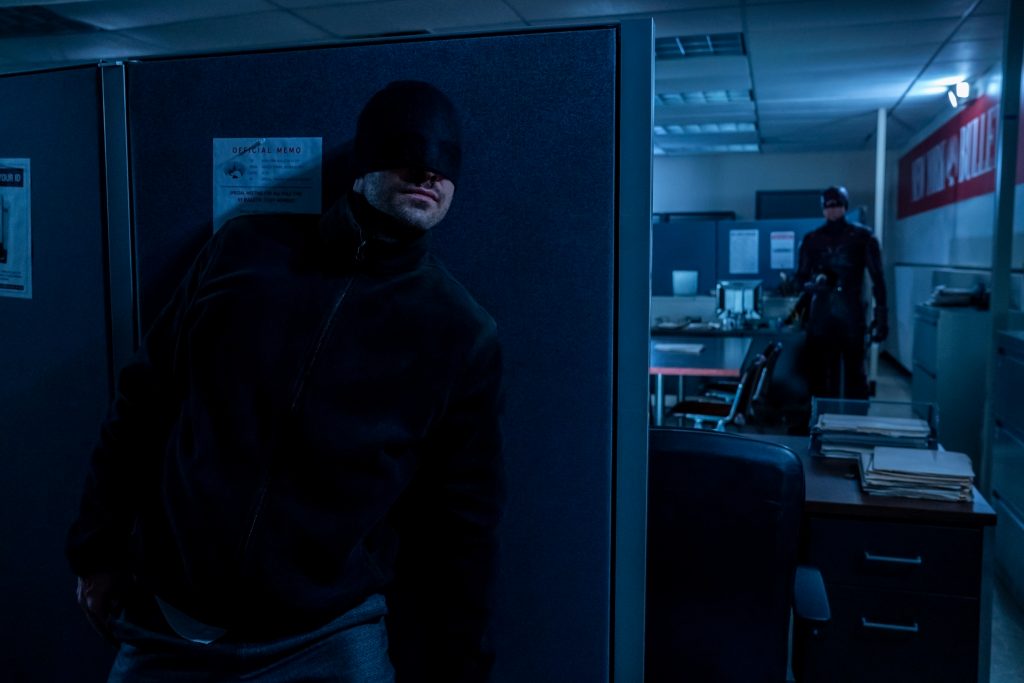
Marvel’s Daredevil
Let’s rewind back to the point in which the paths of Matt Murdock, Dex, and Nadeem all converged, in a manner orchestrated by Fisk. There was something powerful and fateful about the first meeting of the two “Daredevils”—halfway through the season, both characters have individually gone through radically different journeys of self-exploration, and the clash between the two was like a chemical explosion. While I reveled in the creativity of the choreography and the display of Dex’s ability when the New York Comic-Con showed off the Bulletin fight sequence, something seeped into my head on my repeat viewing weeks later.
I had a sinking feeling that the context of the scene, with Dex murdering New York Bulletin journalists, and the fight scene taking place in their office space, was meant to be a reference to another recent tragedy. It seemed to me at the time that this unsettling sequence was meant to mirror the real-life June 2018 shooting at the Capital Gazette building, home of publications The Capital and Maryland Gazette, where five employees were killed.
It was sometime before writing this piece that I did my due diligence and found that production of Daredevil season 3 ended earlier in June, a couple of weeks before the tragedy occurred. For the most part, similarities were mere coincidence. Still, anyone with their ear to the news in the United States knows fully well that this anti-journalist sentiment was alive and well before this attack. One of the more important pillars of our modern society is that of the journalist and the news publication, having the freedom to hold those in power accountable to the truth. Likewise, these Bulletin reporters, led by Karen Page, were working on a piece that would have shed some light to Wilson Fisk’s fragile situation. Fisk nailed two birds with one stone, dispatching of the opposition, while also creating his false public enemy.
As with the aforementioned church attack in the show, the timing between the show’s premiere date and real-life events yet again produced an unusual effect. Another pillar of our society, one based on worship and faith, was under attack by violent forces. While these fictional and real events have no direct relationship, this frightening sequence was certainly based on a real attitude of intolerance that has been pervasive for the longest time. The context and scenario are different from reality, but the imagery remains the same to recall such real-life fears and anxieties.

Marvel’s Daredevil
Our main characters of Matt Murdock, Foggy Nelson, and Karen Page eventually get to a point where they must decide how to solve this impossible dilemma. The idealistic Foggy still firmly believed in the United States justice system, while a weary Matt believes that his vigilantism is the only solution. In real life, the justice system has been exploited, abused, corrupted, and has overall acted as a counter in favor of bad actors—I remained unsure of which method the show was advocating for. In the end, it seemed to favor a one-two punch combination.
If anyone is looking towards fantasy for solutions to real-life problems, they will find themselves sorely mistaken. Our current problems with combating cynicism, authoritarianism, and other negative forces will not be solved by two macho guys mercilessly punching each other in the face. While nothing will convince me that all art and media isn’t political, I will concede that entertainment such as Daredevil is meant to be escapism. I would argue, however, that the concept of “escapism” is grossly understood.
Not all escapist fiction is meant to completely take you away from the clear and present societal and personal anxieties. Rather, much of it is meant to take you to a place where those fears and anxieties can be confronted and defeated in a fantastical way—maybe it’s with a sword and shield, super strength, or the ability to fly. This is the fantasy that superhero fiction is able to provide.
Daredevil season 3 will obviously not solve any of our real-life problems—but it demonstrates that something as fantastical as the MCU can be very powerful by recalling realistic imagery and sentiments. In a society where people are fearful to live their regular lives under the threat of violence, however real or false that threat may be, and with bad actors exploiting that very fear, we need a fantasy like Daredevil. Season 3 is all about how he earned the famous moniker “the Man Without Fear.”
Daredevil may not be able to save us in real life, but perhaps for some people, he could inspire them to be just as fearless.
-
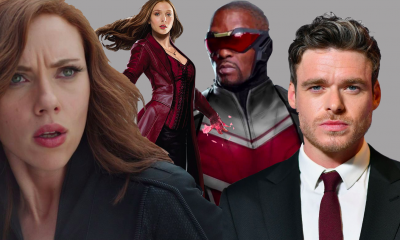
 Marvel News Desk4 years ago
Marvel News Desk4 years agoBold 2020 MCU Predictions-Marvel News Desk #145
-
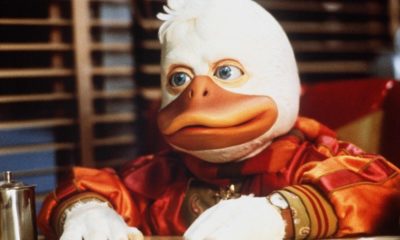
 Features6 years ago
Features6 years agoHoward the Duck: The First MCU Movie?
-
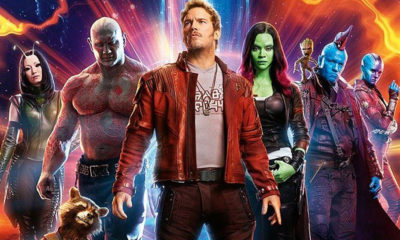
 Lists6 years ago
Lists6 years ago5 Characters We Want To See In ‘Guardians of the Galaxy: Vol. 3’
-
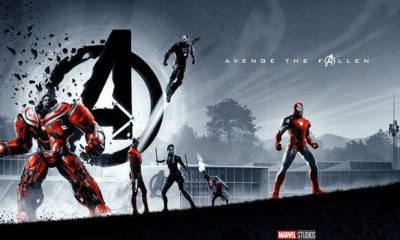
 Uncategorized5 years ago
Uncategorized5 years agoAvengers: End Game Spoiler Review-Marvel News Desk #114
-

 Features5 years ago
Features5 years agoRunaways Season 2 Feels Like A Step Back
-
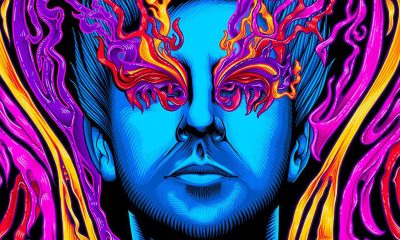
 Marvel News Desk5 years ago
Marvel News Desk5 years agoLegion, S.H.I.E.L.D., and Jessica Jones TV Review Central-Marvel News Desk #123
-
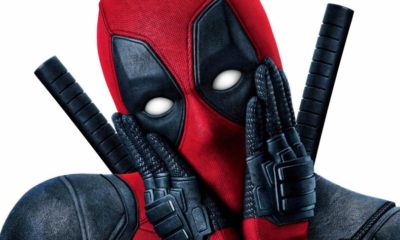
 News6 years ago
News6 years agoCONTEST: Win a Digital Copy of Deapool 2 Super Duper Cut & Deadpool
-
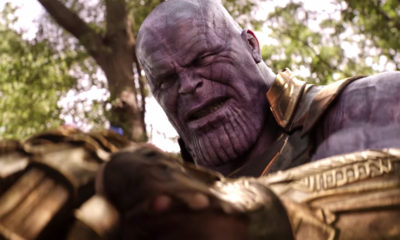
 Marvel News Desk5 years ago
Marvel News Desk5 years agoDisney+ Revealed and Infinity Saga Retrospective-Marvel News Desk #113


